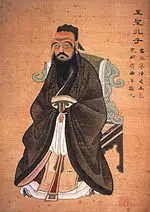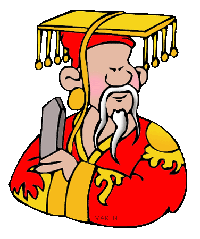Chinese Religion
China is one of the ancient civilizations on earth. China is a country with diverse religious beliefs. Three main religions formed part of ancient Chinese history.

They are as follows:
1. Taoism
2. Confucianism
3. Buddhism

Shang dynasty was one of the historical Chinese dynasties, where foretelling played a major role. It was in the Shang dynasty (about 2000 BC), where people followed different gods, such as the weather gods and sky gods. People greatly believed that above all gods was Shang Ti who ruled over the lesser gods.
Great emphasis was also given in worshipping earth’s composition, i.e. land, river, sea, star, wind, moon, sun as they believed that country’s prosperity comes from factors that are above and beyond. People living during this dynasty also believed that their parents and grandparents became gods when they died and they wanted to be worshipped as gods.

1. Taoism:
It was during the rule of Chou dynasty when the concept of T’ien (meaning Heaven) similar to the concept of Shang Ti emerged. Like Shang Ti; T’ien also ruled over all other gods. Lot many different views emerged during the period 600 BC to the coming 200 years.
It was during this time when the Chinese philosopher named Lao Tzu came up with the philosophy of Taoism which gained popularity among the masses. This philosophy believed that people should not attain anything by force but should compromise and use natural forces in their favor.
This philosophy further states that there is a universal force which flows through all living beings and respecting that force will lead them to a happy life.

2. Confucianism
 Soon after Taoism, came another philosophy called Confucianism. Founder of this philosophy was Confucius. His philosophy holds that one should treat others with respect, politeness and kindness. This philosophy emphasized on two main qualities, i.e. honor and morality
Soon after Taoism, came another philosophy called Confucianism. Founder of this philosophy was Confucius. His philosophy holds that one should treat others with respect, politeness and kindness. This philosophy emphasized on two main qualities, i.e. honor and morality
Confucius is known today for many of his sayings. Here are a few of them:
• Forget injuries, never forget kindnesses.
• It does not matter how slowly you go as long as you do not stop.
• Our greatest glory is not, in never falling, but in getting up every time we do.
• When anger rises, think of the consequences.
• Everything has its beauty but not everyone sees it.
There were two other important philosophical schools of this period. One was started by Mo Tzu, which states that the way to happiness was by treating everyone the same as they were treating their own families.
The other was Legalism (a kind of Confucianism), which believed that all people were basically bad, and were required to be kept in line by strict laws and harsh punishments in order to maintain order and peace.

3. Buddhism
 It was around 500 AD, during the rule of Three Kingdoms when Buddhism first came to China from India. Siddhartha Gautama who is commonly known as the Buddha(the enlightened one)was the founder of Buddhism.
It was around 500 AD, during the rule of Three Kingdoms when Buddhism first came to China from India. Siddhartha Gautama who is commonly known as the Buddha(the enlightened one)was the founder of Buddhism.
Buddhism came into China during the rule of Emperor Ming of Han dynasty. He had seen a dream of a golden man wearing a shining halo. He questioned about his dream to his advisors. One of his advisors mentioned about existence of Buddha.
Emperor Ming then sent a representative to Southern India to inquire about Buddhist preaching. Later these scriptures were sent to China on the back of white horses, after which the White Horse temple got named. When Buddhism entered China, Taoism and Confucianism were the two major religions in China.
In its early stages, Buddhism did not find many followers. However it was during 200 AD, when Buddhism got a firm position in China. Buddhism emphasizes that the world is transient and is constantly changing. It further states that world is soulless and there is nothing eternal in it.
In this transient world, sorrow is bound to come. By following the path of moderation, humans can raise above these worldly troubles.

Buddha’s teachings have been summarized under the category of Four Noble Truths.
They are as follows:
a. Suffering is common i.e. birth, sickness, old age and death
b. Cause of Suffering is due to ignorance and greed
c. End of Suffering is by cutting off the greed and ignorance
d. Path to end suffering is by the following the eightfold path
The Eight parts of the eightfold path are as follows:
1. Right View
2. Right Thought
3. Right Speech
4. Right Conduct
5. Right Livelihood
6. Right Effort
7. Right Mindfulness
8. Right Concentration
Under the rule of Ming dynasty around 1368 AD, Confucianism was again the main religion of emperors, while Buddhism and Taoism were popular among the ordinary people.


